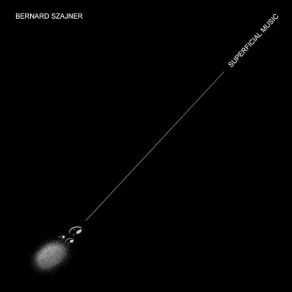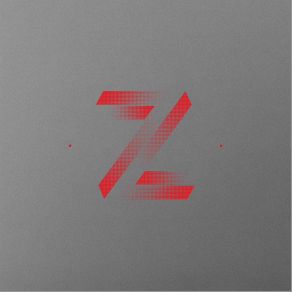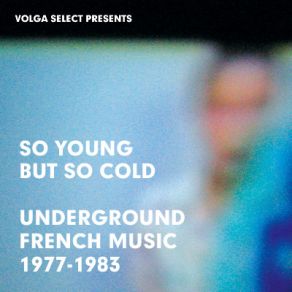Bernard Szajner
Wikimp3 information about the music of Bernard Szajner. On our website we have 4 albums and 2 collections of artist Bernard Szajner. You can find useful information and download songs of this artist. We also know that Bernard Szajner represents Electronica genres.
Biography
[Edit]Bernard Szajner ("ZANY-ner") is a unique, Paris-based visual effects artist and musician who has created groundbreaking works in multiple disciplines while consistently striving to create and explore new relationships between light and sound. A self-described "dilettante in the true sense of the term," Szajner was born in Grenoble, France, late in the second World War, and hidden in a cave by his anxious Polish parents. Always creative, he took up painting at the age of 11, then became fascinated by stories of Leonardo da Vinci and his grand spectacles combining music, actors, and mechanized effects. Szajner abandoned paint and brush to eagerly study the details of Etienne Gaspard Robertson and his "Magic Lantern" phantasmagorias, Vaucanson and his mysterious automatons, Oskar Schlemmer of the Bauhaus school, and other great visual effects artists and his career path was born.
He began working on light shows in the late '60s, and became fascinated by the potential of lasers. Steady work as a stage designer and technician with such groups as Gong, Magma, Bachdenkel, and many others led him to become acknowledged as one of the top light technicians in France by the end of the '70s, at which point he joined up with inventor Patrice Warrener and electronic music innovator Tim Blake (who had just left Daevid Allen's Gong), to work on an idea for a new kind of light show. Since 1972 Blake had been championing a concept called the Crystal Machine, which called for controlling lasers with synthesized music. As the Crystal Machine they staged some small laser shows at the Kinopanorama in Paris, and played two week-long engagements at a large Paris nightclub in 1976 and 1977. Despite poor publicity the shows consistently sold out and created quite a buzz, but the enormous staging, and the financial and technical difficulties of these productions made them unfeasible.
Szajner left the Crystal Machine, and continued to work as a visual effects director, doing laser lighting for music acts ranging from the Who to Klaus Schulze and Jean-Michel Jarre. Still losing money and tired of dealing with big personalities, Szajner decided to experiment with smaller shows, asking unknown artists to perform against the backdrop of his visuals. This too proved frustrating, as he could not find artists willing to compose music for his presentations; so, self-taught as ever, he borrowed a synthesizer and started teaching himself composition, in his words "randomly twisting knobs and pushing buttons until I liked what I heard." He wrote a series of pieces based around Frank Herbert's epic science fiction masterwork Dune, enlisting the help of some of his musician friends. Initially released on a small independent French label, this debut recording (released under the pseudonym Zed) is now considered an electronica tour de force. 1979's Visions of Dune is a synth-based album featured a Zuehl electronica "all-star" set of musicians — Colin Swinburne (Bachdenkel), Clement Bailly (Magma, Gong), Hanny Rowe (Heldon), and vocalists Klaus Blasquiz (Magma) and Anannka Raghel. It was poorly received by critics in the electronic music community in France, but was well-received publicly, selling 5,000 copies in the subsequent two years. After accidentally meeting an English music manager who was impressed by his recording, Szajner quickly received a recording contract with French major-label Pathe Marconi. The re-released album was well received, highly acclaimed by the British press for its unique vision and style. Reissued by Spalax, with its layered synths, odd sequencers, distorted bass, and Fripp-ish guitars, Visions of Dune has been compared to works by Heldon, Richard Pinhas, Hawkwind and Tangerine Dream, and remains one of the great progressive albums in French music.
Visions of Dune caught the ear of Amnesty International, who approached Szajner and asked him to compose a short 30-second piece about the death penalty (then still in effect in France), in his "hard" and "tense" style. The commission led to what many consider his master work, the influential concept album Some Deaths Take Forever. Following an imaginary prisoner into the horrors of Death Row, the album uses hypnotic rhythms, bizarre guitar, sweeping Eno-styled synths, white noise percussion, radio static, and rock guitar riffs to chilling effect. Some Deaths Take Forever brought considerable acclaim to Szajner, and was voted Disc of the Week as well as one of Melody Maker's Top Ten albums of the year. It has endured, being recently reissued on CD and named superstar DJ Carl Craig's favorite electronic album of all time. Szajner then made a high-profile contribution to musical history when he designed the Laser Harp for the 1981 Concerts in China tour by French electronica artist Jean-Michel Jarre. It was a simple task to rig synthesizer notes to trigger lasers, and Szajner backwards-engineered the concept. The original design, a laser separated into 12 beams by a holographic line grating, creates a fan of light beams which appear to be plucked in order to produce sounds: a binary trigger is created in breaking the beam, initializing programmed events using a micro-controller to transform the optical data to analogue. Detractors originally claimed the Laser Harp was a sham, as Jarre would visibly play different notes on the same beam; this was explained by foot switches which allow for moving between different scales. Wearing asbestos gloves, Jarre has continued to use the Laser Harp in his concerts, while considerable technological development (most specifically in the areas of wider range values and control data) has improved the device. Although criticism of its legitimacy as a musical instrument continues, the laser harp remains a unique synthesizer elaboration.
In 1981 Szajner teamed up with Karel Beer to form The (Hypothetical) Prophets, crafting a unique set of synth pop recordings eventually released as a series of 12" singles and one highly collectible concept album, Around the World with the (Hypothetical) Prophets. Both Szajner and Beer used pseudonyms (Norman D. Landing and Joe Veil) and were always photographed with their faces covered. The sound was minimal cold wave synth with some electronic experimentation, with unique vocals alternating in French and English as well as male and female voices. The "single" was "PerSon to PerSon," featuring a male and a female reading personal ads from various publications, revealing a pathetic listing of sexual desires and ambitions, ending with "Looks are not important, it's your soul I want." The group was short-lived, and the records are difficult to find, although the curious may be able to find two songs, "Wallenberg" and "Person to Person," on the out of print 2004 compilation So Young But So Cold: Underground French Music 1977-1983. Also in 1981, Szajner released his most sparse of LPs, Superficial Music, the title of which reflects the opposite of what it says. Compiled from the tapes of the Visions of Dune sessions, albeit played in reverse at half-speed, it forced Szajner to create just by mixing and adding effects. An intellectual effort (and not reissued at this writing), it is a delicate, sensitive experiment in musique concrète, using pitch-change feedback, electronic percussion, slow drones, and other such effects.
In 1983 Szajner had been interested in adding real literary prose to his work, and was attracted to Magazine's singer Howard DeVoto because of the tone of his voice and his twisted sense of poetry. Together they collaborated on the album Brute Reason, a dissonant pop/rock album very different from his previous works. With creative production and arrangements far beyond 1983 standards, Brute Reason is a mixed bag of epic electronic rock with impeccable guitar parts and sweeping synthesizers providing a thoroughly satisfying counterpoint to DeVoto's typically obtuse lyricism.
French critics made an abrupt about-face: in 1985 Bernard Szajner was named Knight of the Order of Arts by the Minister of Culture of France, and in 1986 he received a Culture and Technologies prize from that same ministry. Szajner released a few more singles, then stopped recording music in 1986 to pursue a career as a high tech theatrical and event designer, multimedia composer, and robotic artist. Some highlights include "Beispiel" created for the Electronic Arts Festival at Rennes; "Brute Reason," a creation for the Lyrical Theater of London; "The Hunting of the Snark" for the Printemps de Bourges; "Spirit of the Revolution" created for the Bicentennial Mission, a landmark work in the field of robotic art, building two interactive theatrical computer-controlled automata scenes "La Chouette et le Robot" ("The Owl and the Robot") and "Petit Nicolas" in the 1986-1991 Zoo des Robots installation (in which Szajner was now credited as an animatronics designer); the 1994 eight-minute audiovisual show Vaucanson's Dream, a show combining real objects — a lathe, a loom, Vaucanson machines — with virtual images, to encourage viewers to reflect on artificial beings. He is currently simultaneously creating attractions for amusement parks, designing museum exhibitions, and creating his sculptures of light; in 2007 he mounted his most recent installation "L'Absurdite, Moins une Seconde!" to considerable acclaim.
After 16 years away from music, Szajner has once again began to create recordings, having mixed and produced four albums' worth of material in the last five years: Shameless Clichés, Shadow Boxing Thieves, Death and Other Small Illusions, and Bizarre Pieces for Grand Piano and Invisible Pianist, the latter was composed entirely with digital pencil and piano samples, with Szajner individually modeling the intensity, velocity, duration, reverberation, and other elements of each note. He is seeking representation and a record label to release these recordings.
Szajner's definition of himself as a dilettante, an admirer or lover of the arts, is perhaps true, given the range of his interests and "amateur" approach to creation. Still, his clear contributions to electronic music and explorations of the relation of light and sound make it necessary to credit him as both artist and innovator as well.
Title: Some Deaths Take Forever (Remastered)
Artist: Bernard Szajner
Genre: Electronica, Rock, Alternative
Collections
Featuring albums
Title: France 70 (Folk, Rock & Electronic Rare Gems from the 70's)
Artist: Various Artists
Genre: Alternative






